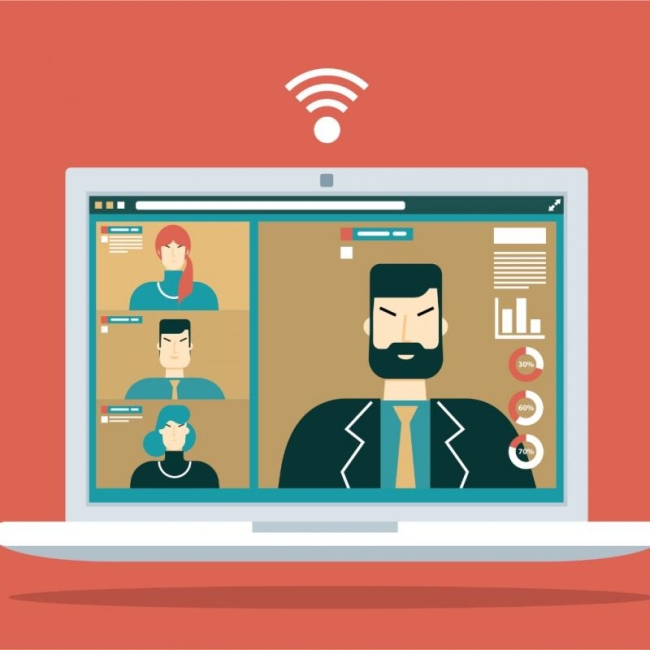You have /5 articles left.
Sign up for a free account or log in.

Istock.com/sorbetto
Colleges and universities are wrestling with how to reopen their campuses for the fall semester. With social distancing requirements likely in place through the rest of the year, any environment that brings large groups of people together in close proximity can create new opportunities for the coronavirus to flourish.
That includes professional meetings. Institutions may also be reticent to permit faculty to travel to such meetings, fearing that they may bring the virus back to their campuses. It could result in new spikes of cases or, at best, require travelers to quarantine for 14 days upon their return, disrupting many of their academic responsibilities. Given that professional societies sponsor many such meetings, they are in the precarious situation of planning professional meetings for their members with the uncertainty of who will or can attend these events.
Professional meetings allow academic researchers to come together to build research relationships and network. The genus of many new ideas and collaborations often grows out of one-to-one and small group interactions at those meetings. Research presentations provide a forum for learning about the newest research in the field and the opportunity to speak one on one with presenters, creating a fertile intellectual environment for discussion and debate. In short, the professional meeting is an important mechanism through which research advances can occur.
Online seminars provide some of these elements, but they lack the interpersonal opportunities for researchers to connect with each other directly, limiting communications to chat messaging only. Academics are willing to pay to travel to professional meetings for the intangible benefits of connecting with colleagues, old and new, and the chance meeting of people at receptions and in the conference hotel hallway. Online meetings lack the value added by such spontaneous interactions and communications.
In addition, representatives from funding agencies like the National Science Foundation also have the chance to interact with grantees, answer questions from people who may submit to their programs and identify emerging research areas. When I served as a program director at NSF, professional meetings were invaluable for connecting with several of my grantees at the same venue and learning about the needs of the academic community that my programs served. All these benefits are difficult to reproduce in an online environment.
Many professional societies also rely on professional meetings as a significant source of revenue, funding numerous other activities that serve their membership. As a former treasurer for the Institute for Operations Research and the Management Sciences (INFORMS), I understand the implications of professional meetings on professional society annual budgets. Many activities that support undergraduate and graduate student mentoring, Ph.D. job placement, diversity initiatives, outreach and advocacy activities, and junior faculty mentoring programs could not exist without the financial support provided by professional meetings.
INFORMS holds one national meeting every fall, which attracts upwards of 7,000 attendees. The space and food contracts for such meetings are negotiated and signed several years in advance. Even if hotels and conference centers make concessions for the COVID-19 pandemic, some of the financial burden will be borne by the professional societies, in addition to the lost surplus from holding the in-person meetings. It is unrealistic to expect that the revenue generated by an in-person meeting can be realized with an online meeting experience structured as a set of presentations.
Regardless of the programmatic and financial considerations, however, moving an in-person meeting online may not just be preferred in this COVID-19 era but also required, given the travel restrictions imposed by universities and the health concerns of faculty members. Many conferences in the coming months may simply have to take place online. If you are confronting such a situation, how can you make the most of it? I recommend that you consider several key elements.
Format and delivery. Many professional meetings last several days. An online meeting should ideally be held over a single day, possibly even on a Saturday when many attendees would otherwise be traveling to a meeting that begins on Monday. This would also not directly conflict with faculty member responsibilities during weekdays, since one of the benefits of attending out-of-town meetings is the reduced distraction.
Although the largest component of in-person meetings is presentations, which are most easily transferable online, they represent only a piece of the total value that such meetings provide for members and attendees. Creating an online meeting centered on the more personal interactions is what members would value.
For example, plenary and keynote speakers are the biggest attractions at professional meetings. Organizing meetings around a group of such speakers would provide the foundation for technical presentations. In addition to their plenary, arranging for those speakers to have several 30-minute small group meetings with conference participants (three to five such sessions, each with 12 to 15 people) would provide the value for some attendees to pay the meeting registration fee. Such additional sessions can be scheduled within or outside the conference period, with the speakers provided an honorarium for their efforts.
This is akin to universities inviting guest speakers to their campus. Part of the value is the presentation. But the one-to-one interactions are what often justify such expenses.
In addition, instead of having attendees present their research orally, you could move top-tier researcher presentations to posters, with attendees able to schedule a poster viewing and listen to the presenter in small groups. Meeting registrants can then sign up for these small group discussions, effectively simulating a more intimate and personal environment for communication among conference presenters. These posters would also be available for viewing at other times without the presenter available for comments. All other presenters can have posters that are available to all attendees, with the presenter available whenever they choose.
Technical support. One challenge in delivering professional meetings in this manner is the technology needed to support it. Planning for such a platform will take time, and professional societies must plan far in advance to ensure a smooth and seamless delivery. Large software companies will seize this opportunity to create a virtual platform software system for meetings of this type. Given that the entire meeting is online, any bandwidth or technology glitches could jeopardize the entire event.
Cost. The cost of running professional meetings online will be significantly lower than in-person meetings, given that there will be no physical space and food expenses. Therefore, registration fees should be lower. A set of registration tiers should be available based on each attendee’s desired level of involvement and participation. For example, the registration cost could be set by the number of top-tier poster sessions an attendee is interested in viewing, which would place a limit on the number registrations sold at each tier. The key point is that for academics to be willing to pay a registration fee to participate in an online professional meeting, they must see the value in doing so. By reorganizing large professional meetings around small group interactions, academics will be more willing to participate.
Over all, the revenue surplus generated by these professional meetings will undoubtedly be lower than in-person meeting. The best-case scenario for professional societies is that when the worst of the pandemic is over and large gatherings of people become safe, in-person professional meetings can be resumed. In the interim, keeping members engaged through online meetings is vital for the long-term solvency of the professionally society and its activities in support of its members.








